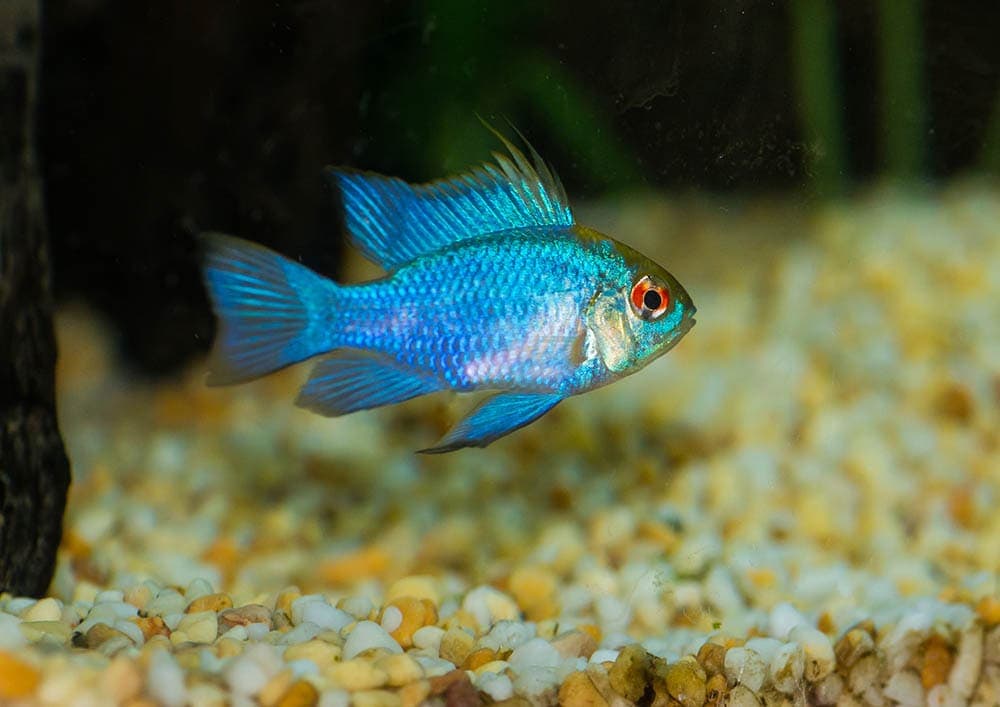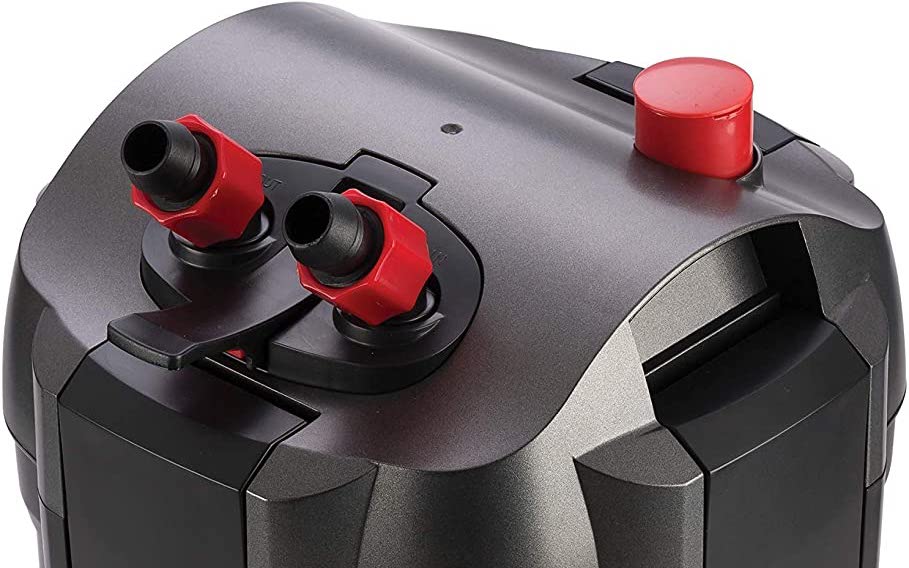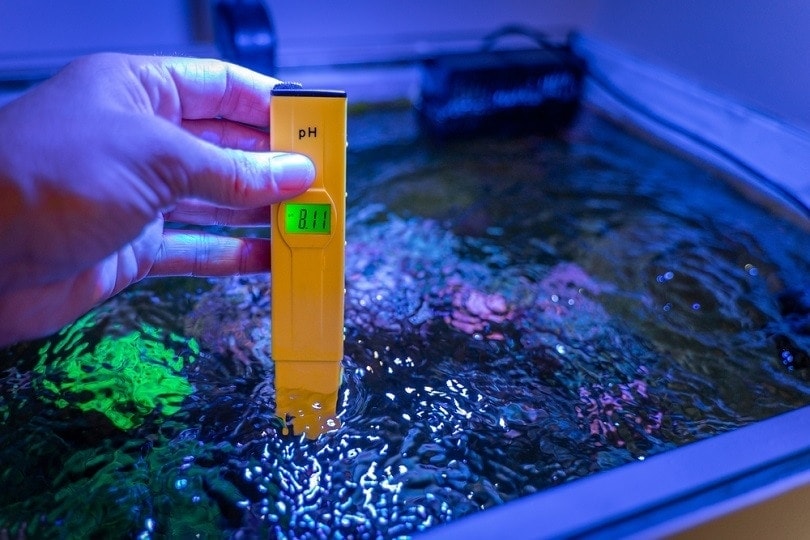17 Tank Mates for Guppy Fish: Compatibility Guide 2024
By Ashley Bates
Updated on
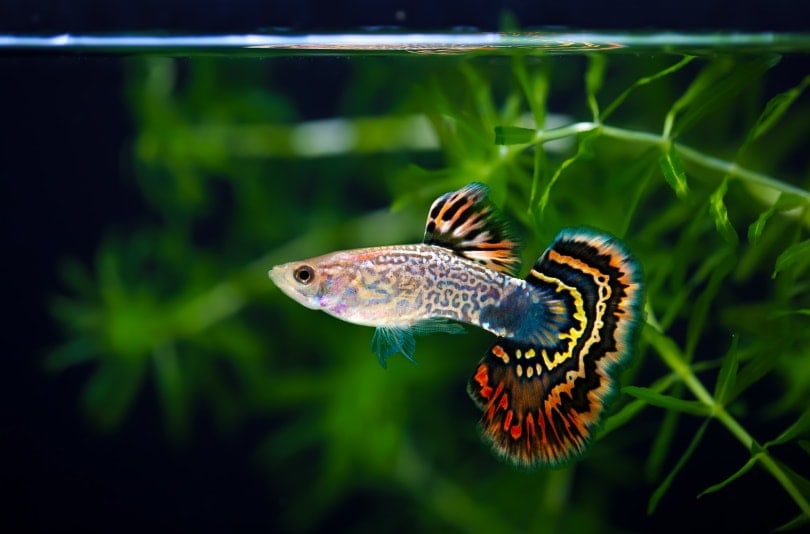
If you’ve owned guppies for quite a while now and you think you want to expand your variety, you’re probably scouring through possibilities. Guppies are terrific fish to have, but they can be a little particular when it comes to tankmates.
So, what are the best tank mates for guppies? We rounded up 17 top choices—but this isn’t an exhaustive list. So, if you have your eyes set on another fish that didn’t make our list, be sure to research compatibility before bringing home any newcomers.
The 17 Tank Mates for Guppy Fish
1. Suckermouth Catfish
| Size: | 19 inches (50 cm) |
| Diet: | Omnivore |
| Minimum tank size: | 125 gallons |
| Care level: | Beginner |
| Temperament: | Peaceful |
Suckermouth catfish are bottom feeders that make very compatible tank mates for guppies. They keep to themselves—you can often find them on the sides or bottom of the tank.
2. African Dwarf Frog – Best for Small Tanks
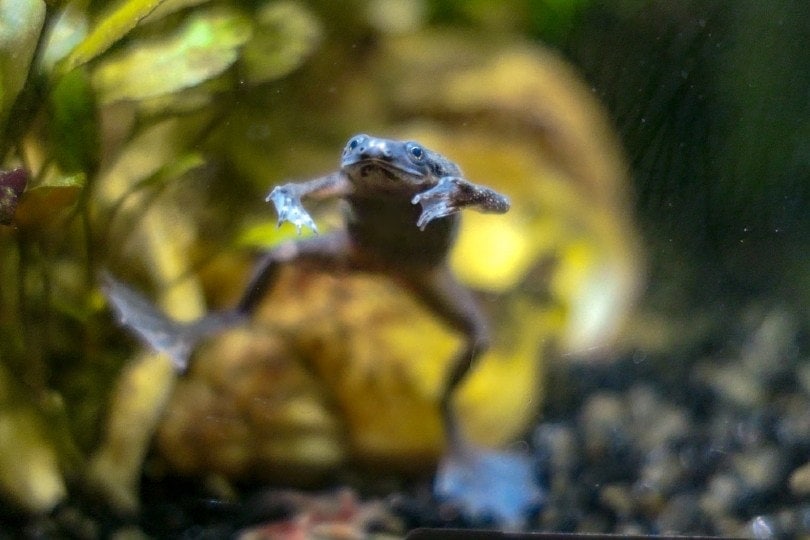
| Size: | 1.25 inches |
| Diet: | Omnivore |
| Minimum tank size: | 5 gallons |
| Care level: | Beginner |
| Temperament: | Peaceful |
African dwarf frogs are adorable amphibians that will fill your tank with character. These docile cuties tend to get along with just about any tankmates. These frogs can be fun for beginners, but they are aquatic, so you should never handle them.
3. Common Molly
| Size: | 4.5 inches |
| Diet: | Primarily herbivores |
| Minimum tank size: | 10 gallons |
| Care level: | Easy |
| Temperament: | Peaceful |
The common Molly is a sweet little fish that minds its own business. Mollies are top feeders, so they will gladly swim to the top to greet you when you have treats. These fish are super adaptable and straightforward to care for.
4. Southern Platyfish
| Size: | 2.5 inches |
| Diet: | Omnivore |
| Minimum tank size: | 20 gallons (95 liters) |
| Care level: | Beginner |
| Temperament: | Peaceful |
Southern Platyfish are tiny, colorful fish that can add personality to any aquarium. These calm creatures are compatible mates for many fish but do keep in mind that they are quite small, so predatory fish may look at these guys as a light snack.
An upside to the Platyfish is that it doesn’t require a large tank to stay happy—perfect for small setups.
5. Swordtails
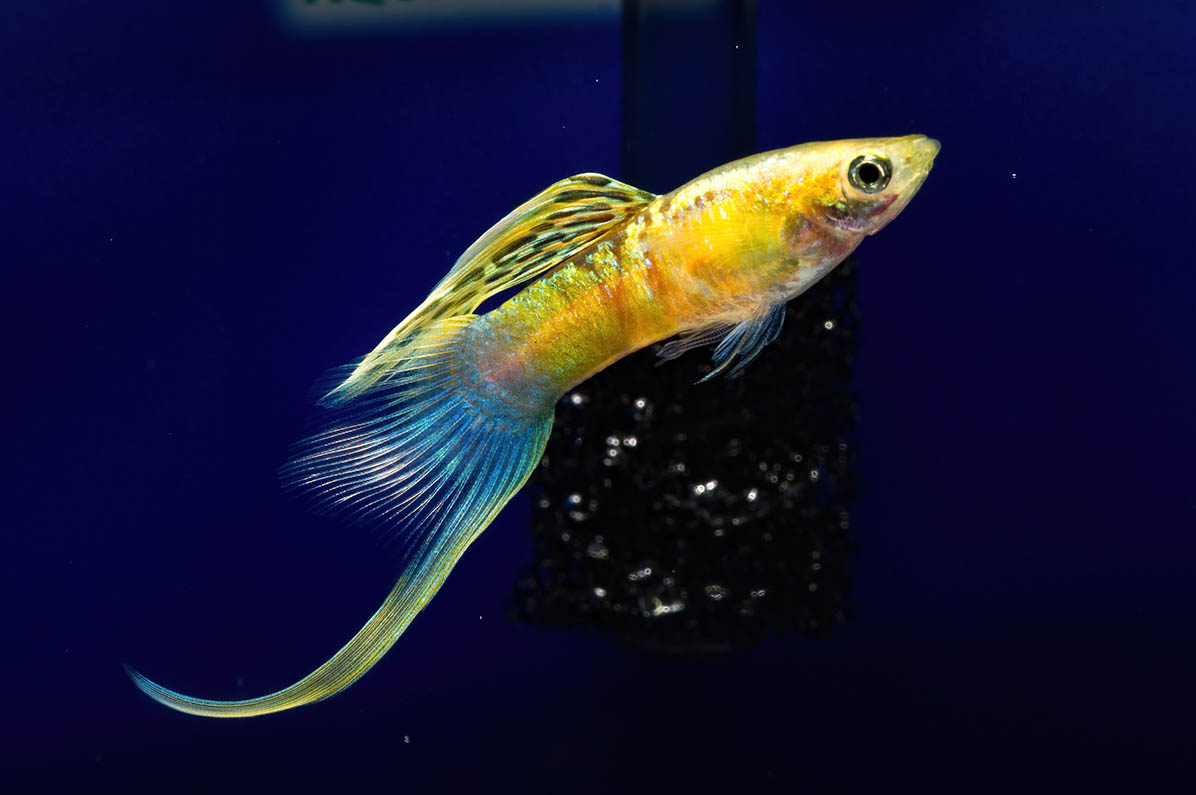
| Size: | 5.5 inches |
| Diet: | Omnivore |
| Minimum tank size: | 15 gallons |
| Care level: | Beginner |
| Temperament: | Peaceful |
Swordtails are fascinating fish with long bodies and flowing, sword-like fins—hence the name. Swordtails are resilient and hardy. However, even though these fish are peaceful with most tank mates, they might become aggressive with other males.
6. Harlequin Rasbora
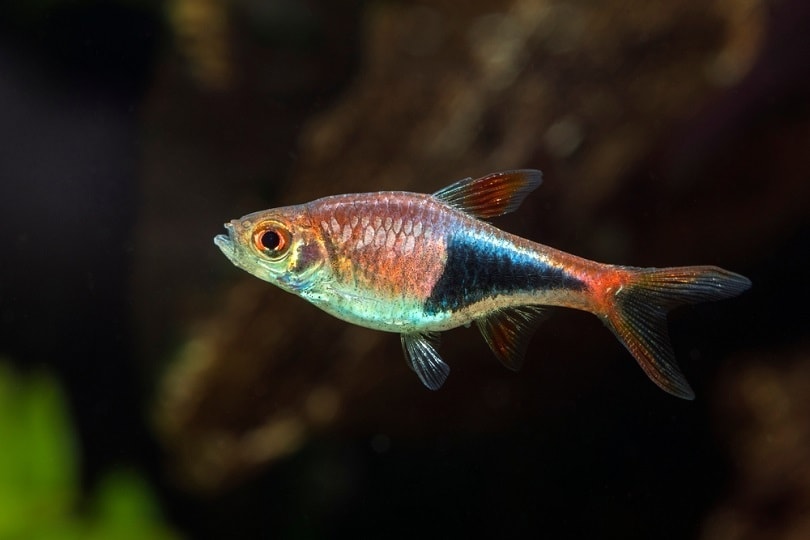
| Size: | 2-inch |
| Diet: | Omnivore |
| Minimum tank size: | 10 gallons |
| Care level: | Beginner |
| Temperament: | Peaceful |
The Harlequin Rasbora is a tiny fish with a distinct black porkchop-shaped strip down its sides. These fish are notorious schooling fish, meaning they need to be in groups of their own kind. So, just make sure the aquarium is big enough for all aquatic life.
7. Kuhli Loach
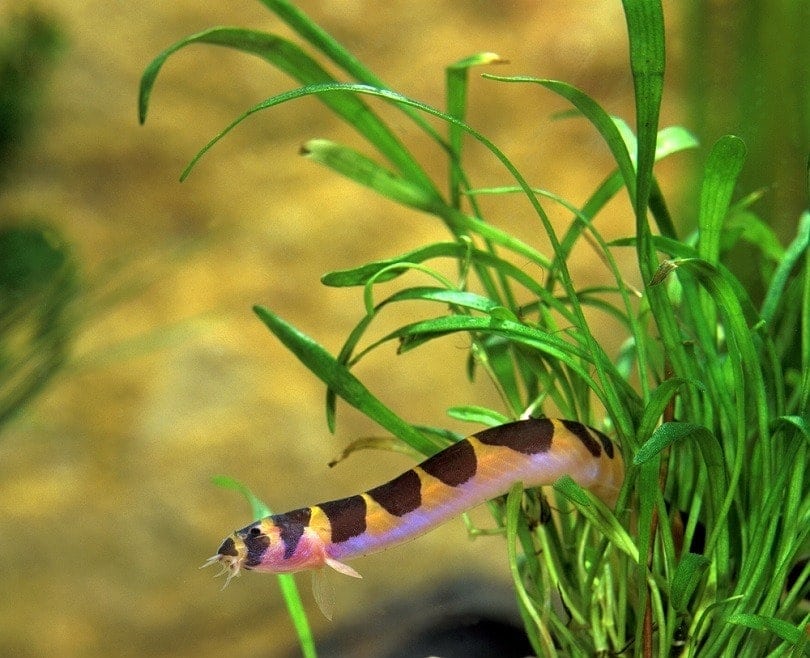
| Size: | 4 inches |
| Diet: | Omnivore |
| Minimum tank size: | 30 gallons |
| Care level: | Intermediate |
| Temperament: | Peaceful |
The Kuhli loach is one of the neatest-looking fish around. These little swimmers have long, eel-like bodies with all sorts of color variations. These fish have quite a presence, but they love burrowing in the substrate, so they might play hide and seek often.
- Related Read: 10 Best Tank Mates for Kuhli Loach
8. Cardinal Tetra
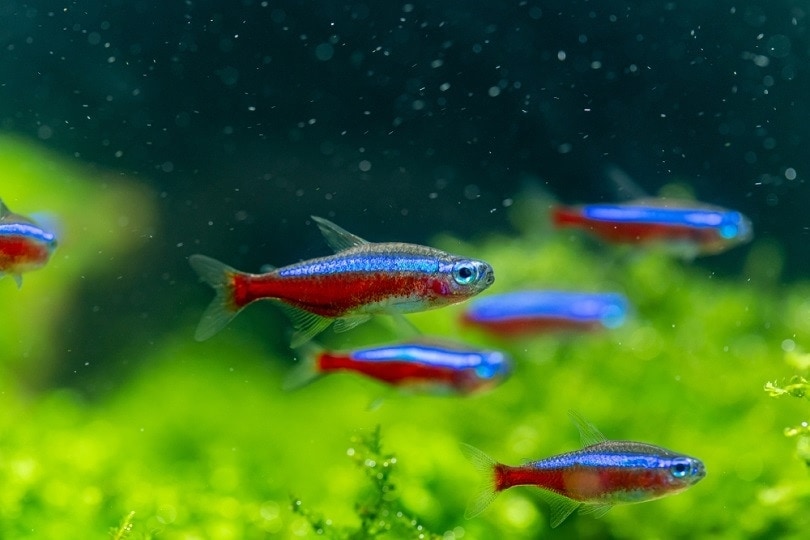
| Size: | 1.25 inches |
| Diet: | Omnivore |
| Minimum tank size: | 20 gallons (95 liters) |
| Care level: | Intermediate |
| Temperament: | Peaceful |
Cardinal tetras are bold, beautifully colored fish with slender, flat bodies. This type of tetra is very tiny, so they would work well in a modest-sized aquarium. You can have these little cuties alongside guppies, but be cautious of bigger fish.
9. Angelfish
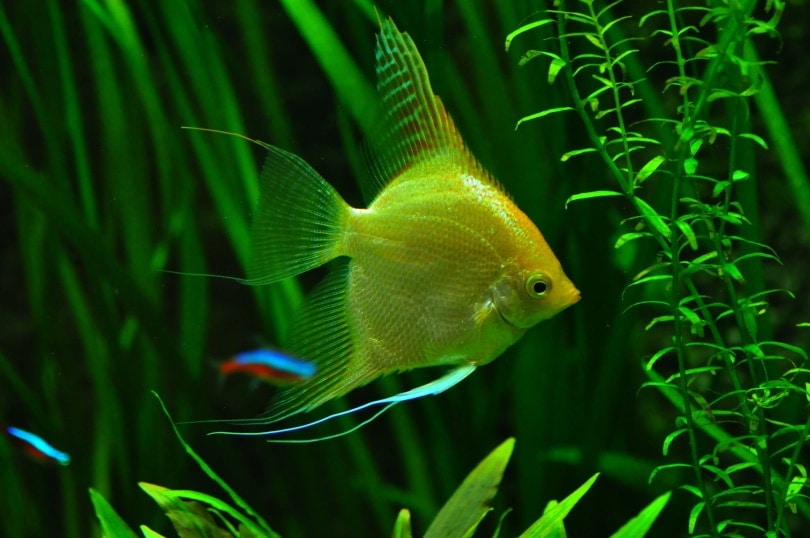
| Size: | 6 inches |
| Diet: | Omnivore |
| Minimum tank size: | 55 gallons |
| Care level: | Intermediate |
| Temperament: | Semi-aggressive |
Angelfish might be lovely, but they can be temperamental, too. Luckily for your guppies, the pair work together well. However, these fish need a more extensive setup than some, so make sure your aquarium is a fitting selection.
10. Bronze Corydoras
| Size: | 2.5 inches |
| Diet: | Omnivore |
| Minimum tank size: | 10 gallons |
| Care level: | Beginner |
| Temperament: | Peaceful |
Low-maintenance and hardy, Bronze corydoras are easy keepers. At first glance, they might look ordinary or unexciting, but they are actually quite attractive fish. Their scales have iridescent hues of pink and green to add a pop of color to the tank.
11. Siamese Fighting Fish
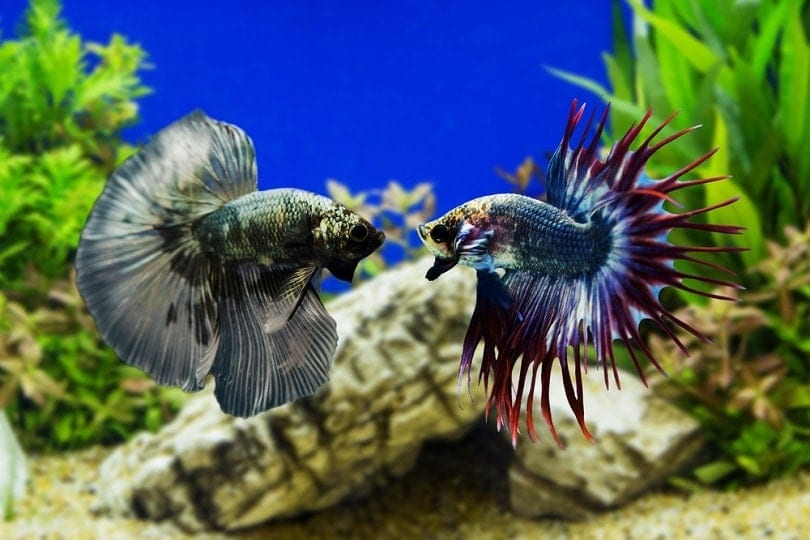
| Size: | 3 inches |
| Diet: | Carnivorous |
| Minimum tank size: | 5 gallons |
| Care level: | Beginner |
| Temperament: | Aggressive |
Siamese fighting fish, otherwise known as Bettas, are sassy little swimmers. Unfortunately, they are incompatible with their own kind and quite a few other fish. Luckily, guppies are in the safe zone with this bossy brute.
12. Zebra Danio
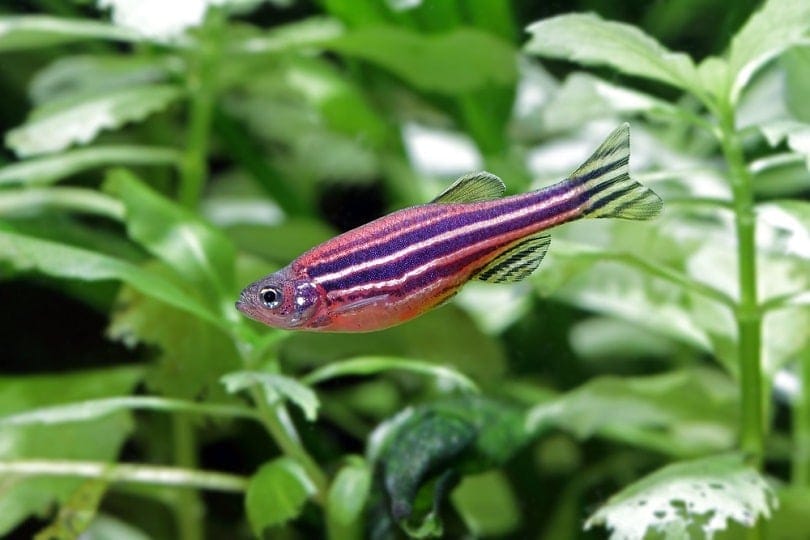
| Size: | 2 inches |
| Diet: | Omnivore |
| Minimum tank size: | 10 gallons |
| Care level: | Beginner |
| Temperament: | Peaceful |
The Zebra danio gets its name thanks to its horizontal black and white stripes. They are a favorite of freshwater aquarists because of how easy they are to care for. Plus, they can withstand a wide variety of water temperatures and conditions. These little swimmers are safe with your guppies.
13. Cherry Shrimp
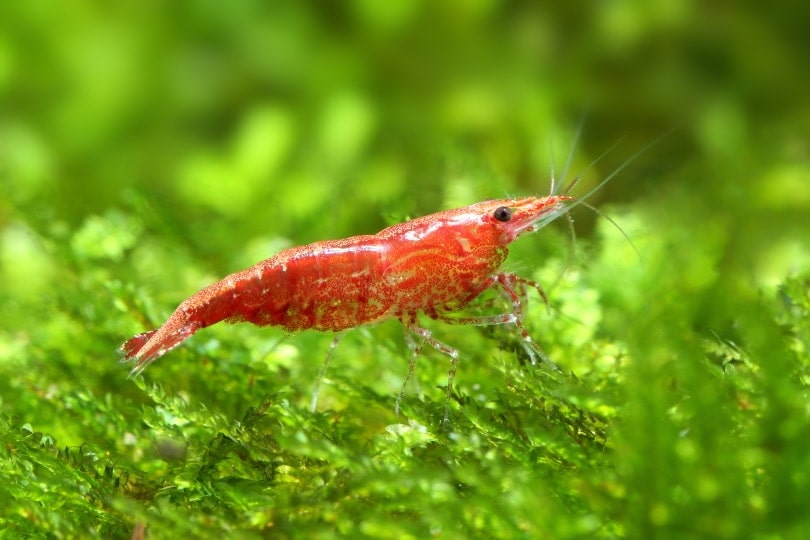
| Size: | 1.5 inches |
| Diet: | Omnivore |
| Minimum tank size: | 5 gallons |
| Care level: | Easy |
| Temperament: | Active |
Cherry shrimp are bubbly little guys with lots of personality. You can watch them bouncing in the water from side to side. They love exploring the space and eating all of the dead plant matter and food particles other fish leave behind.
14. Endler’s Livebearer
| Size: | 1.8 inches |
| Diet: | Omnivore |
| Minimum tank size: | 20 gallons |
| Care level: | Beginner |
| Temperament: | Active |
Endler’s livebearers are lively, colorful little critters that zip around the enclosure with speed. Because they are a little peppy, they can be targets for larger fish. Guppies work fine with this fish, but larger species are ill-advised.
15. Cichlids

| Size: | 10 inches |
| Diet: | Carnivore, herbivore, omnivore |
| Minimum tank size: | 30-gallon |
| Care level: | Beginner |
| Temperament: | Semi-aggressive |
Cichlids can make good tank mates for guppies, but they might not get along with their own kind. These fish grow fast and have the potential to be aggressive, so you should carefully select any other tank mates before committing.
- Related Read: 20 Types of Cichlids for Your Aquarium (With Pictures)
16. Cory Catfish (Corydoras)
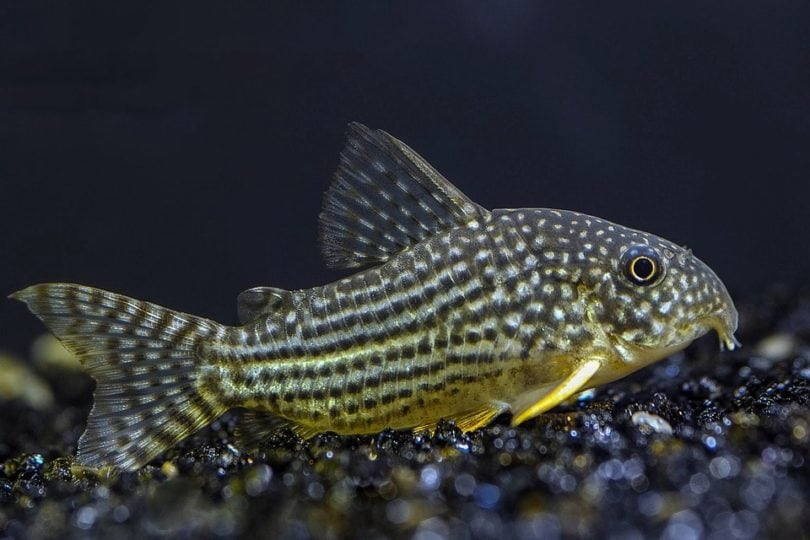
| Size: | 1–4 inches |
| Diet: | Omnivore |
| Minimum tank size: | 20 gallons (95 liters) |
| Care level: | Beginner |
| Temperament: | Peaceful (best in groups of three or more) |
Cory catfish are small fish that grow no longer than 4 inches as adults. These docile fish are easy to keep and tend to feed on the bottom. However, it isn’t unusual to see them zipping through the water on occasion.
17. White Cloud Mountain Minnow
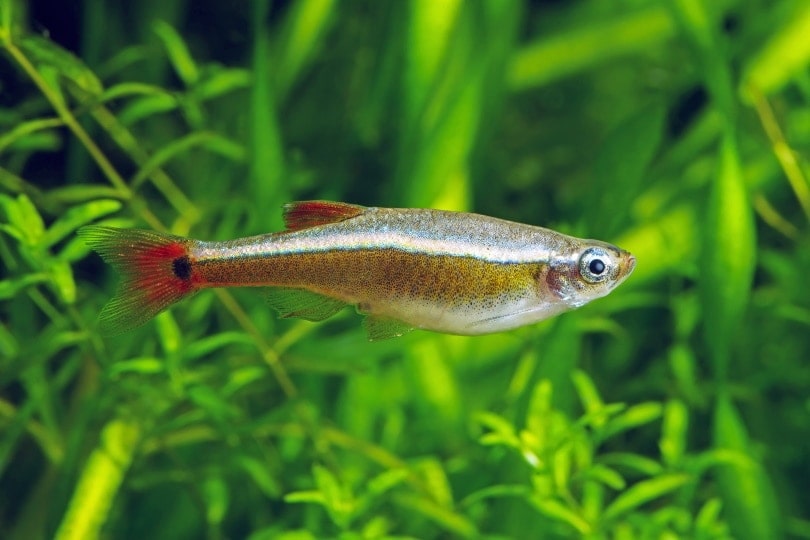
| Size: | 1.5 inches |
| Diet: | Omnivore |
| Minimum tank size: | 5 gallons |
| Care level: | Easy |
| Temperament: | Peaceful |
White Cloud mountain minnows are gentle fish with luminescent scales. These tiny guys require very little space and are easy to take care of. However, this is a schooling fish, so you should opt for six or more when making your purchase.
What Makes a Good Tank Mate for Guppy Fish?
Guppies are very agreeable thank mates who get along with just about any fish, providing they have the same tank requirements. That’s not to say guppies can never be aggressive, though. If they feel threatened, they can hold their own.
Most guppy-to-guppy aggression happens when the male-to-female ratio is off. Therefore, your females should outnumber males in every setup scenario.
In addition, peaceful fish and bottom feeders work well with guppies. Much larger, more aggressive fish might think the guppy is a snack, so steer clear of predatory fish altogether.
Where Do Guppy Fish Prefer to Live in the Aquarium?
Guppies can swim all over the tank at will, but that doesn’t mean they will all the time. You can find guppies hiding in corners or behind plant leaves, too. They like to feel secure and protected by their habitat.
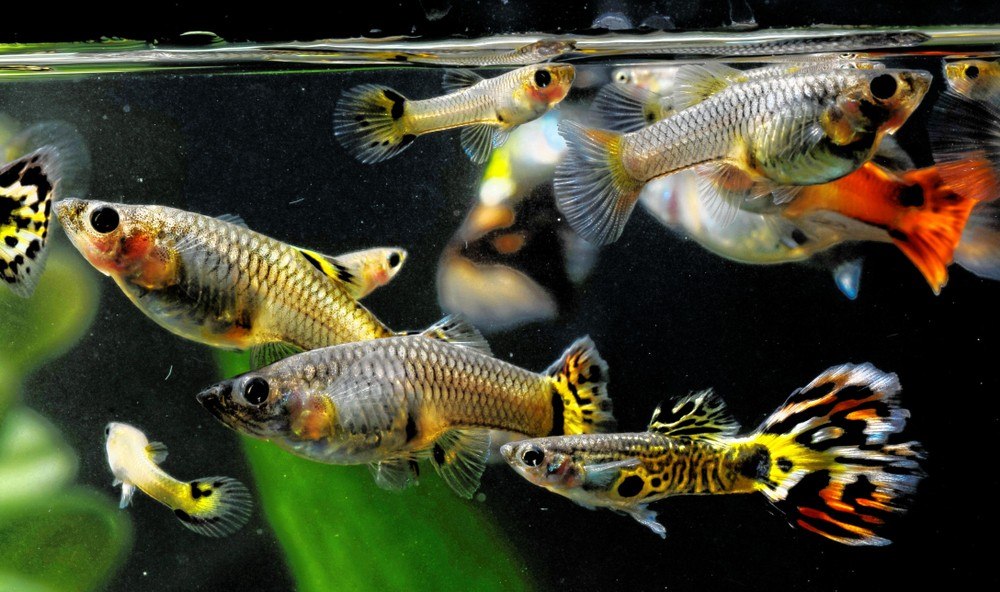
Water Parameters
In their natural habitat, guppies are swimmers in tropical waters. In captivity, they thrive in warm, filtrated freshwater that closely mimics their natural habitat.
Guppies should dwell in an aquarium that is 5 gallons or larger. The water pH should stay around 7.0, and temperatures need to range from 74 to 82 degrees Fahrenheit. The ideal hardiness is between 8 to 12 dGH.
Size
At the very beginning of their life cycle, hatchlings start at only ¼ inch. After that, guppies remain small fish, growing no more than 2.5 inches long.
Aggressive Behaviors
Guppies can be aggressive, but they typically aren’t as long as the tank conditions are well-balanced. Of course, you always need your females to outnumber males, as dominant aggression is the primary type.
Females often tend to show aggression when they are pregnant. Otherwise, they can be very docile.
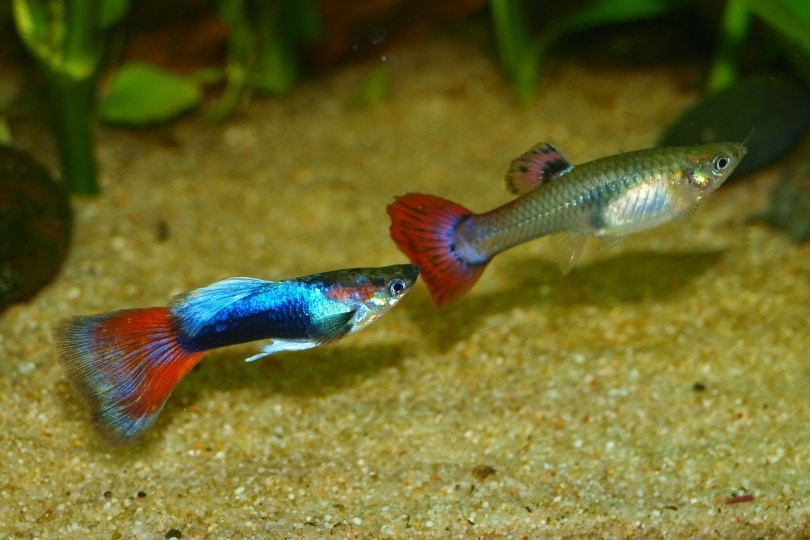
Top 5 Benefits of Having Tank Mates for Guppy Fish in Your Aquarium
1. Guppies are visually diverse.
Guppies are elongated fish that come in all sorts of color varieties. Like many other fish, female guppies have duller colors, have shorter fins, and are larger than their male counterparts.
2. They’re cheap and easy to find.
You can find a guppy in just about any aquatic pet shop—both online and in physical locations. They aren’t too pricey, either, ranging from $10 to $25.
3. They work well for breeding.
Guppies are prolific breeding fish that can have up to 40 fry per month when the conditions are right. However, if you aren’t too keen on quick reproduction, you can separate your guppies to prevent unwanted multiplying.
4. They are easy to take care of.
Guppies are relatively low-maintenance fish. You just have to make sure they have a proper diet and the correct environmental requirements.
5. They don’t require a big aquarium.
If you want guppies but aren’t sure about the space that it might take up—fret not. Guppies only need 5 gallons or more to stay healthy.
Conclusion
Hopefully, if you already have guppies, this article gave you lots of new possibilities to explore. Each of these fish works well with guppies, but make sure to research any other tank mates they might have upon their home arrival, too.
With a little bit of research and planning, you can have a tank full of beautiful tank life that can coexist in peace.
- You might be interested: 8 Best Tank Mates for Fire-Bellied Toads
Featured Image Credit: panpilai paipa, Shutterstock


